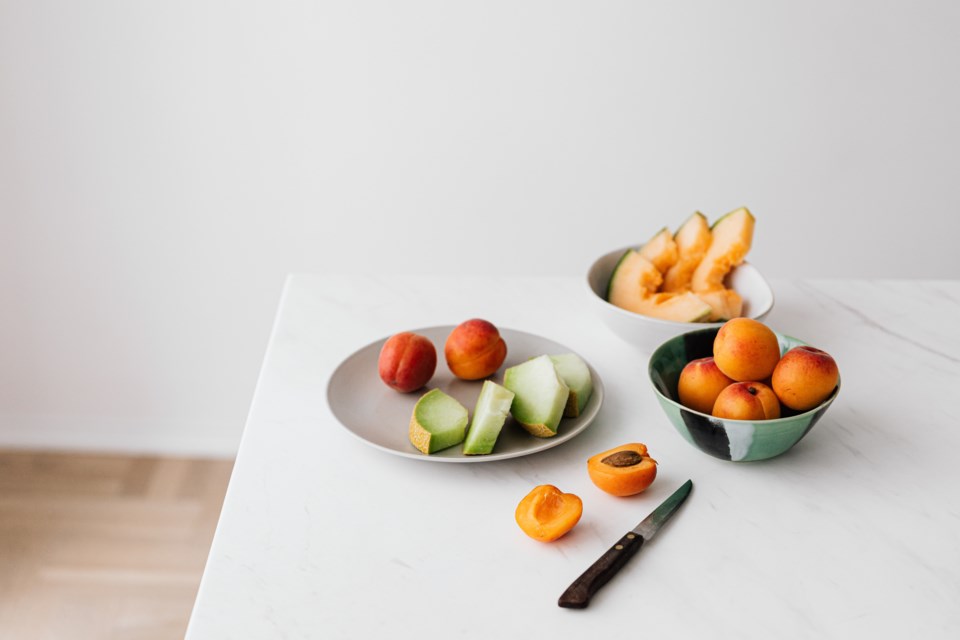This regular column on tips to live more sustainably comes from the 52 Weeks Climate Action Challenge. The challenge was created by Laurel Hood and Sherri Jackson. Hood is a retired Collingwood Collegiate Institute teacher, and Jackson is a writer and speaker, and ran as the Green Party’s candidate for the area in the last federal election. Both are climate activists.
*****
I know you eagerly invested some time last week into researching vegetarian meals you might want to spring on your family. If you have picky or unadventurous eaters (or if it’s you), you may have to diplomatically broach this subject. The good news is, there are lots more options out there than simply veggie sticks and hummus. Not knocking hummus. But, you get what I mean.
You may recently have heard the term “flexitarian.” I personally like it, because it doesn’t lump you into a category of any kind. You can eat whatever you want, but, you eat with a conscious understanding of what you’re eating, where it came from, and its effect on the environment.
It encourages mostly plant-based proteins, but doesn’t exclude animal products. It’s more of a lifestyle than a diet, and here are the basics:
- Eat mostly fruits, vegetables, legumes and whole grains.
- Focus on protein from plants over animals.
- Be flexible (hence the name), and incorporate animal proteins once in a while, if you want.
- Eat the least processed, most natural forms of foods.
- Limit added sugar and sweets.
Flexitarian is basically what we’re suggesting, with sliding scales of animal products in your diet. If you are planning to go vegetarian/vegan or you already are, then you’re already ahead of us!
Challenge 32: Make a vegetarian (good) or vegan (best) meal
Using the recipes and the groceries you bought last week, this week you’re making a vegetarian meal that you can share (or not) with your family.
As we’ve said before, if you’ve substituted meat for an all Doritos diet, vegetarianism isn’t making you healthier. But, if you’re eating balanced meals, and ensuring you're getting your daily intake of vitamins and nutrients, vegetarianism can provide many health benefits like improved heart health, reduced cancer risk, prevention of Type 2 diabetes, lower blood pressure, decreased asthma symptoms, weight loss, slowing the aging process and improved bone health.
Often I hear from people that going vegetarian was their child’s initiative, and they just followed along. Our kids are recognizing things that we haven’t – that sometimes you have to change things up if you want anything to change!
If, on the other hand, your kids have built-in kale detectors, you can try some of these tips.
- Pureeing things hides a multitude of sins. If you’re having spaghetti sauce, whir in some grated zucchini, carrots, anything that can disappear into that lovely sauce. It won’t change the flavour, but it will provide some more nutrients.
- Give them a choice between two good options, so they feel more involved.
- Let them help prepare the meal. This is also called “buy-in” - if you helped make it, you’re more inclined to eat it.
- Make smoothies a regular thing. See pureeing things, above.
- Eat lots of fruit. Grow from there.
- Start with milder tasting greens, like baby spinach, and work up to the more bitter ones.
- Don’t make it a battle. You won’t win.
In your research last week, you will have more than likely discovered that vegetarian options can be easy, filling, and delicious. It doesn’t have to be a hardship to choose a vegetarian/vegan option. It can be a highlight.
Eat vegan or vegetarian because you have discovered some great vegan or vegetarian meals, and you’ll get the added bonus of improved health, and saving the planet. Wow! All in one veggie chili. Imagine!
*****



